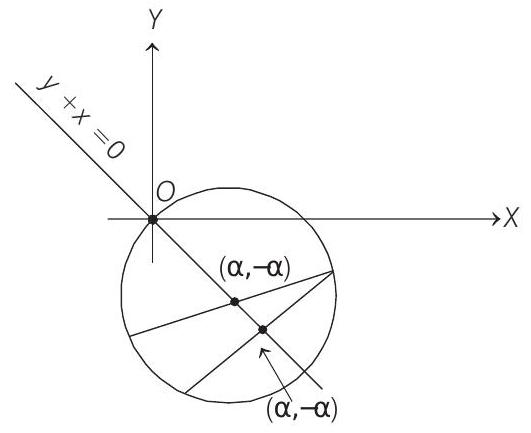Circle 5 Question 19
19. Find the intervals of values of
Show Answer
Answer:
Correct Answer: 19.
Solution:
- Given,
Since,

Equation of the chord having
But this chord will pass through the point
But this quadratic equation will have two distinct roots, if
Therefore,






